Brant: Encounter with Polyphemus II
Annotations
Polyphemus stands in the center of the image, using a large cut-down tree as a walking stick (659) and holding a boulder in his hand. He stands in the water far from the shore, yet the water does not even reach his knees. He chases the ships of Aeneas, which have taken Achaemenides on board, and they sail away as rapidly as possible to avoid the wrath of the Cyclops (666-9). An army of Cyclopes, on the left, appear out of the woods, roused by the shouts of Polyphemus, armed but not inclined to help him (675-9). The Cyclopes live on the island of Sicily. (Katy Purington)
Woodcut illustration from the “Strasbourg Vergil,” edited by Sebastian Brant: Publii Virgilii Maronis Opera cum quinque vulgatis commentariis expolitissimisque figuris atque imaginibus nuper per Sebastianum Brant superadditis (Strasbourg: Johannis Grieninger, 1502), fol. 206r, executed by an anonymous engraver under the direction of Brant.

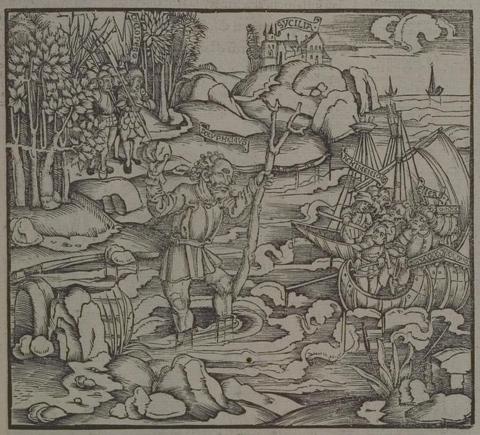

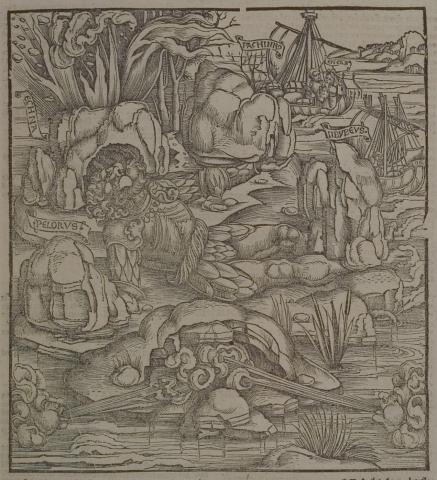
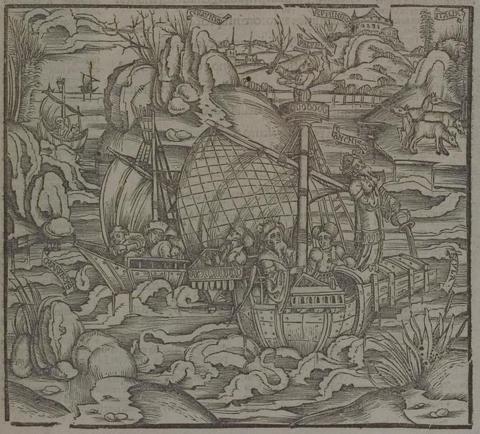
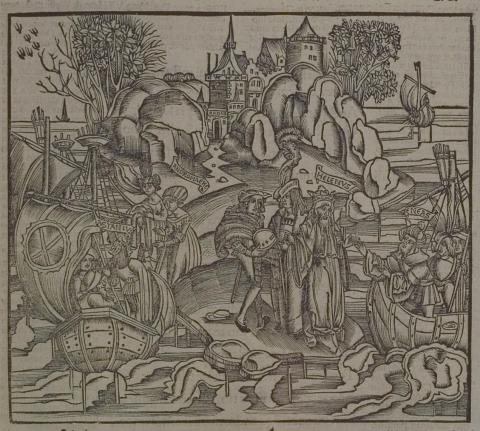
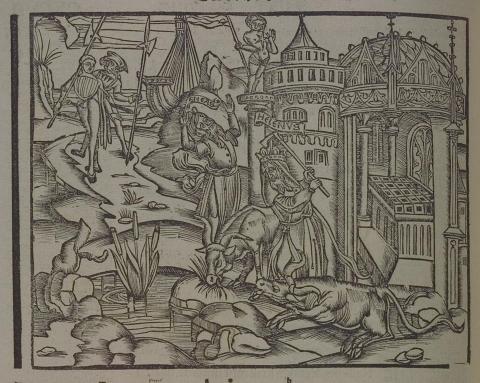
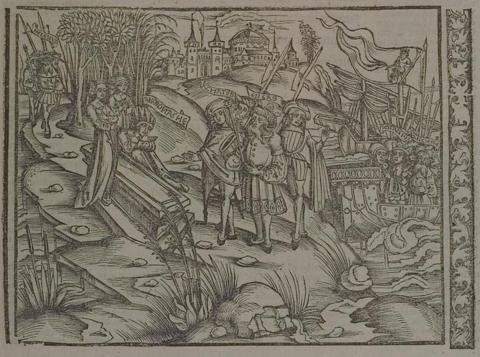


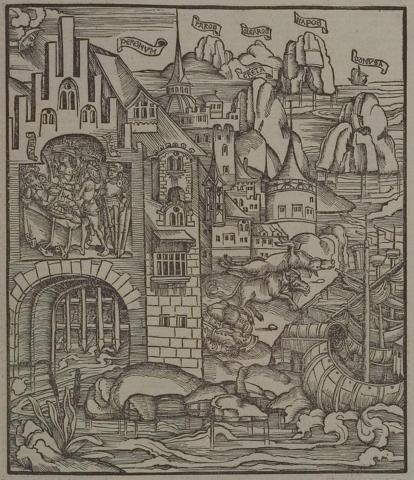
Sebastian Brant (1458–1521) was a humanist scholar of many competencies. Trained in classics and law at the University of Basel, Brant later lectured in jurisprudence there and practiced law in his native city of Strasbourg. While his satirical poem Das Narrenschiff won him considerable standing as a writer, his role in the transmission of Virgil to the Renaissance was at least as important. In 1502 he and Strasbourg printer Johannes Grüninger produced a major edition of Virgil’s works, along with Donatus’ Life and the commentaries of Servius, Landino, and Calderini, with more than two hundred woodcut illustrations. (Annabel Patterson)